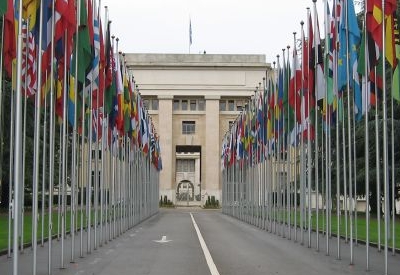A U.S. - China phase one trade agreement is a first step. Does this lead to a policy of detente in the South China Sea?
- (1) China and the U.S. have now agreed to a "Phase One" trade agreement that cancels planned Tariffs against each other. China will purchase more agriculture products, though, intellectual property rights, forced technology transfers, currency manipulation (by both parties) and the central governments propensity for subsidizing state owned enterprises (S.O.E. 's) remain issues that need to be proven over the long term to deem the agreement a success even as an initial contract.
- (2) Moreover, the issue of the militarization by China in the South China Sea remains a contentious issue. That the two sides were able to resolve a trade difference will help foster goodwill, but, if the central government persists in treating these waters as their own; the U.S. continues with FONOPS (freedom of navigation operations) tension between the two sides will remain at a moderate level. Japan has deployed a warship (Izumi helicopter carrier) to be active in the South China Sea that will add a further dimension in the area and bolster American influence. Time will tell if Beijing will stand down somewhat from their, what appears to be- war readiness stance. We should know more in the short term, particularly, if Tsai wins re-election in Taiwan as this looks entirely plausible and how will Beijing react to that outcome.
- (3) Now, Xi will be feeling some relief, though many Tariffs remain and can always be reinstated if foreign policy matters escalate in circumstances not conducive to diplomacy. Hong Kong and China's slowing economy currently exacerbate his options and his standing among Chinese citizens who are being hurt financially; remember, there was a trade deal made in May that China backed out from further hurting the mainland. USTR Robert Lighthizer who helped negotiate the agreement admitted that the success of the agreement rests with reformers within the CPC and not the hardline loyalists. - Xi may demand modifications. As one writer noted: "...the tariff equivalent of NTBs on China’ imports from the US is 33% on
average, while that on the US’ imports from China is 14%>' Non tariff barriers need to be made public to provide a broader picture of this agreement. NTB's include ancillary costs that
oftenoutweigh the overall tariff value. Import quotas are problematic for exporters moving their goods into China as one example. Licensing and stringent standards are other potent NTB's seen recently for Canadian exporters of canola oil into China.1
- (4) Certain pressures on Xi remain in a comparative sense to his predecessor, Hu Jintao who led China to rapid growth. Currently, we see China underperforming in the latter stages of Xi's second term to his dismay, the CPC, and citizens who have grown accustomed to annual growth rates in the 10 % area during Hu's time in office, according to the Wall Street Journal. 2007 saw a 6.9 % growth rate, while two London economists predict China's growth will drop to 2% by the end of the next decade, further putting pressure on the PRC military to expand and act while the resources are available. With the advent of 'Xi Jinping Thought' enshrined in China's Constitution, Xi is faced with self-fulfilled prophecies to establish himself as one of China's great leaders since Mao.
- (5) China has had two officials expelled from their embassy by American representatives over spying allegations as reported by Reuters on December 16 to further inflame relations between the two sides. Per Reuters: “The U.S.accusations against Chinese personnel severely disregard reality,” said Geng Shuang (Foreign Ministry spokesman.) The Chinese officials breached security at a base in Virginia this fall, and only stopped driving towards the base after fire trucks were used to block their path, the Times said.
- (6) An election year (2020) is upon the U.S. in 2020, and with Donald Trump facing impeachment (impeached Dec.18) he also needs a diversion away from the negative attention and polls that currently indicate 47.3% of Americans support impeachment; 46.4% do not, according to FiveThirtyEight. A military type of conflict with Beijing can provide a deflection for both leaders, even on a small scale-- both are active in the region and a mishap is possible. At best, the status quo will remain in 2020 despite China shifting to a more active role militarily in the SCS region. Japan is shedding its pacifist label and will begin exercises in the SCS in May, as reports indicate. Spring time will offer a better picture of PRC and others intentions towards civility in the region that harbours "mutual respect"a slogan that Chinese officials are becoming noted for in their press forums. While much work lies ahead on trade between the two powers, a military confrontation may derail the detente necessary to achieve the trade goals to spur the Chinese economy (tariffs will return to higher levels in the case of protracted arms conflict) and propel Donald Trump's re-election ambitions. What a peach!
1 "The Effects of China-US Free Trade Agreement (CHUSFTA)
Cai Songfeng, Zhang Yaxiong, Yuan Jianqin
(State Information Center)." Global Trade Analysis Project. <https://www.gtap.agecon.purdue.edu/resources/download/7437.pdf>. 16 December 2019.





